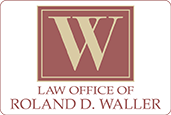Trust Administration
A revocable trust is used as an estate planning tool. The vast majority of revocable trusts are set up to avoid probate. The person who sets up the revocable trust is referred to as a “settlor” or “grantor”. When they passed away, the trust designates a successor trustee to administer the provisions of the trust. A trust document will designate who is to receive the monies after the settlor’s death. Some trusts may provide that the money is to be held and sent out periodically based on age, or other criteria. A successor trustee has a fiduciary duty to the beneficiaries of the trust. A Federal Identification Number needs to be obtained for tax purposes. An annual accounting must be made each year and sent to the beneficiaries of the estate. The Trustee must also file a tax return called a 1041, which is a fiduciary tax return showing what income the trust received and the expenses and distributions. If all the income has been distributed to the beneficiaries, the trust does not have to pay any income tax. The trustee would send to each of the beneficiaries a K-1, which would show how much of the income of the trust each beneficiary would have to pay tax on. A trustee is also required to provide the beneficiaries with an inventory of the trust assets. Trusts are not supervised by the Court. The only persons who are entitled to know the contents of the trust are the designated beneficiaries and the trustee.

